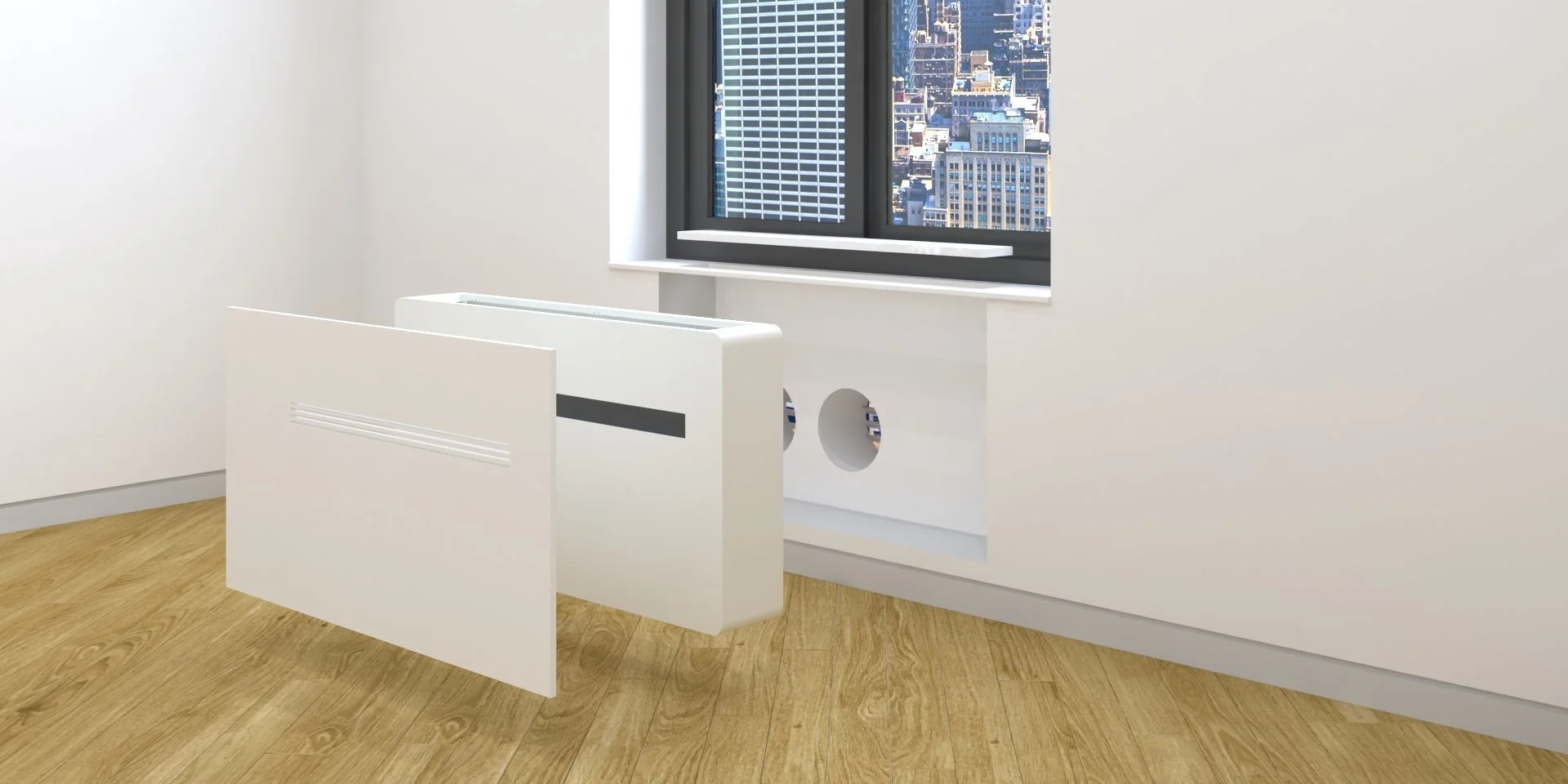How to Lower Construction Costs in New Builds by Reducing Mechanical Systems
Rising material and labor costs are forcing developers and builders to rethink how buildings are designed. One of the most effective ways to cut construction costs is by reducing the number of mechanical systems.
It’s crucial to understand that simplifying mechanical design can lower costs without compromising performance or comfort.
The Cost of Mechanical Complexity
Mechanical systems represent a significant share of total construction cost and coordination risk. Complexity translates directly into higher expenditures:
Equipment and material costs: Relying on separate HVAC, heating, and ventilation systems increases the number of units, installation steps, and supporting infrastructure required.
Construction timelines: More trades and interfaces increase schedule risk and labor requirements.
Spatial inefficiency: Large boiler rooms, extensive ductwork, and vertical chases consume valuable floor area that could otherwise generate revenue.
In short, mechanical redundancy creates both direct and opportunity costs that compound over the life of the building.
Strategies to Reduce Mechanical Systems and Lower Costs
1. All-Electric HVAC
Transitioning to all-electric systems eliminates the need for combustion-based infrastructure such as gas lines, and combustion air provisions.
Capital Expenditure (CapEx) savings: Reduced infrastructure coordination and installation.
Operating Expenses (OpEx) benefits: Alignment with electrification policies and potential utility incentives.
Future-proofing: Compliance with tightening decarbonization codes and standards.
2. Integrated Heating and Cooling
Heat pumps consolidate heating and cooling into a single piece of equipment.
Reduced equipment count: One system instead of two—or in the case of Ephoca’s Ducted system, five systems (heating, cooling, dehumidification, fresh air/ERV, and bathroom exhaust) consolidated into one.
Simplified controls: Unified thermostatic and building management integration.
Lower installation labor: Fewer mechanical trades and less piping/ductwork.
3. Decentralized Systems
Replacing central plants, large ducted systems, and VRF (Variable Refrigerant Flow) with an all-in-one heat pump can eliminate the need for extensive mechanical rooms and distribution shafts.
Spatial efficiency: More leasable or sellable floor area.
Material reduction: Minimal ductwork, less piping.
Routing flexibility: Easier adaptation to irregular building layouts.
4. Standardization and Modularization
Repetition in system design reduces both design and construction costs.
Standardized layouts: Repeatable mechanical cores and risers reduce engineering effort.
Modular assemblies: Pre-fabricated system components accelerate installation.
Quality control: Fewer variations reduce installation errors and commissioning issues.
Benefits Beyond Cost
Optimizing mechanical system design generates downstream advantages:
Operational simplicity: Reduced number of systems lowers the burden on facility managers. Maintenance is localized to a single unit rather than impacting an entire floor.
Maintenance efficiency: Fewer components and interfaces mean fewer potential points of failure.
Increased design flexibility: Architects gain more freedom without large shafts and mechanical rooms dictating layouts.
Higher net-to-gross ratio: Additional revenue-generating space improves project financial performance.
Conclusion
Reducing the number of mechanical systems in new construction is a proven, technically sound approach to controlling project costs. All-electric solutions, integrated heating and cooling, decentralized HVAC, and standardized design strategies can streamline construction, minimize capital expenditure, and enhance operational performance.
Eliminate centralized infrastructure and reclaim real estate. Connect with Gigawatt to streamline mechanical design, reduce coordination risk, and simplify installation by consolidating heating, cooling, and hot water into integrated all-electric systems that meet evolving codes and efficiency standards.



